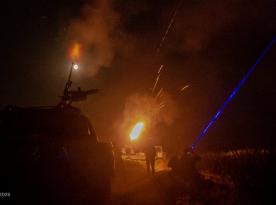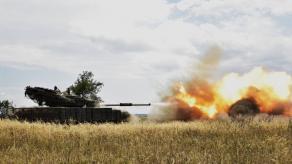Defense Express has often been critical of the russian pompous style of propaganda but we have to admit they are indeed skilled at making disorienting videos showing the manufacture of their weapons. Today, a video report from the workshops making Geran — read: Shahed-136 — drones have been published, most likely filmed in the premises of the Alabuga industrial zone in Tatarstan.
The footage shows dozens of Shahed-136 drones lined up making a picture of rapid production but just like in the reports from the Lancet assembly plant or the bread factory where FPV drones are made, it's the details that really matter.
Read more: Number of Shaheds Produced or Received by russia Reaches 1,600 and 2,600

At a closer look, we can notice that the rows of Shaheds are in fact only airframes, not finished UAVs. Some of them are missing engines, parts of fuselage, or winglets.
Thus, a significant part of what has been demonstrated still needs to be equipped with avionics and engines.
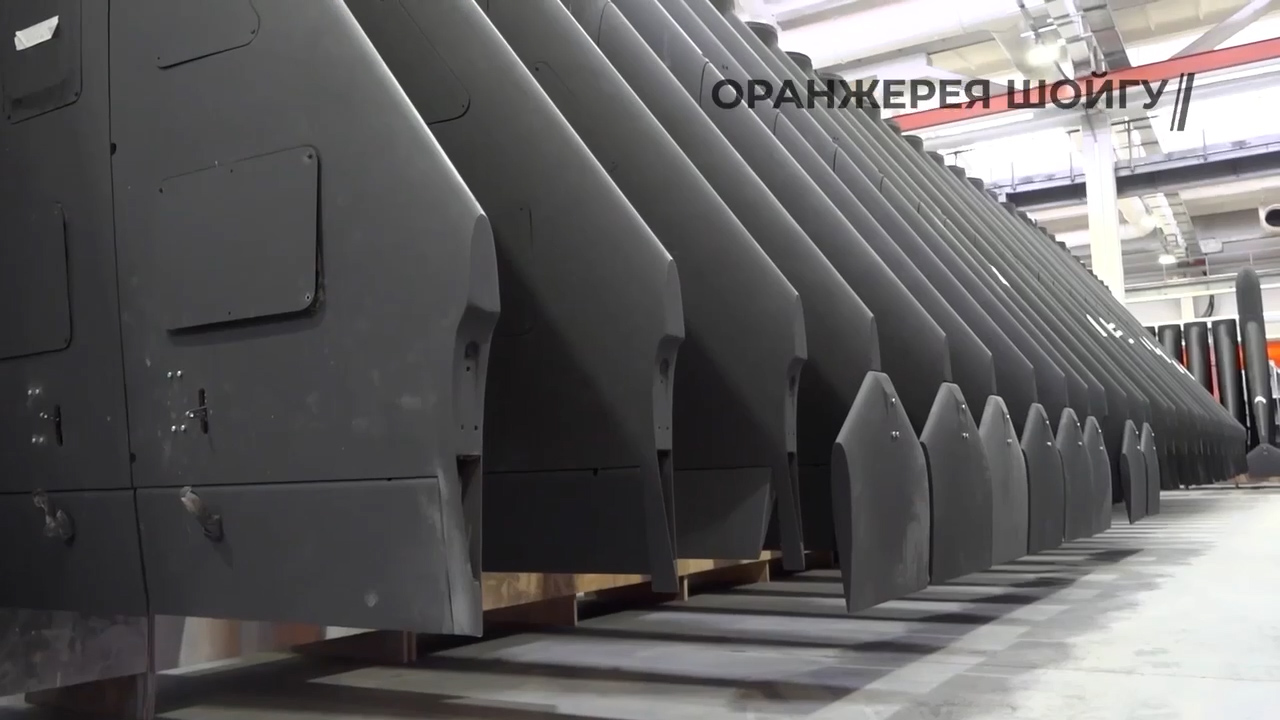
In addition, the same rows of drones are filmed from different angles, which creates the impression of great quantity. In particular, in the photo below are the same drones as in the article's heading, just from another point of view.
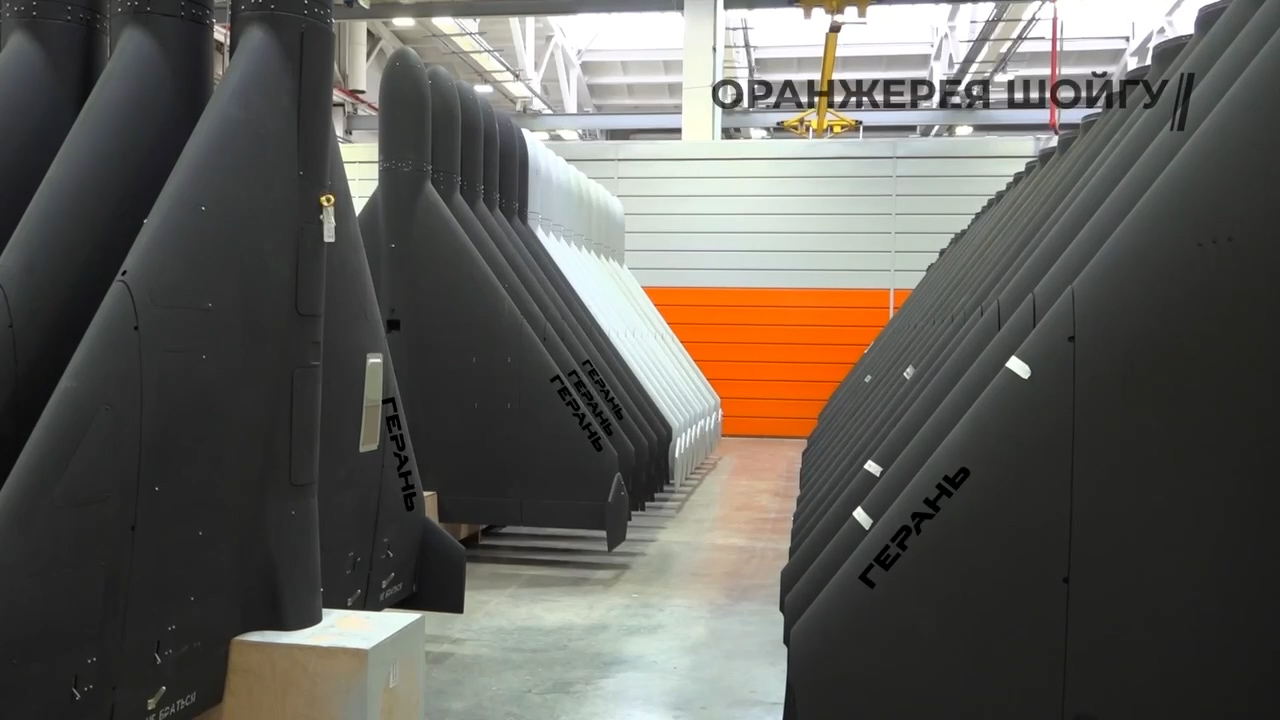
Then, the next photo, not a frame from the video, showcases the process of filling the airframes with equipment, turning them into full-fledged loitering munitions. The personnel are working with over twenty Shahed-136s, and on the other side of the picture, a long line of finished fuselages, not yet fully-made products.
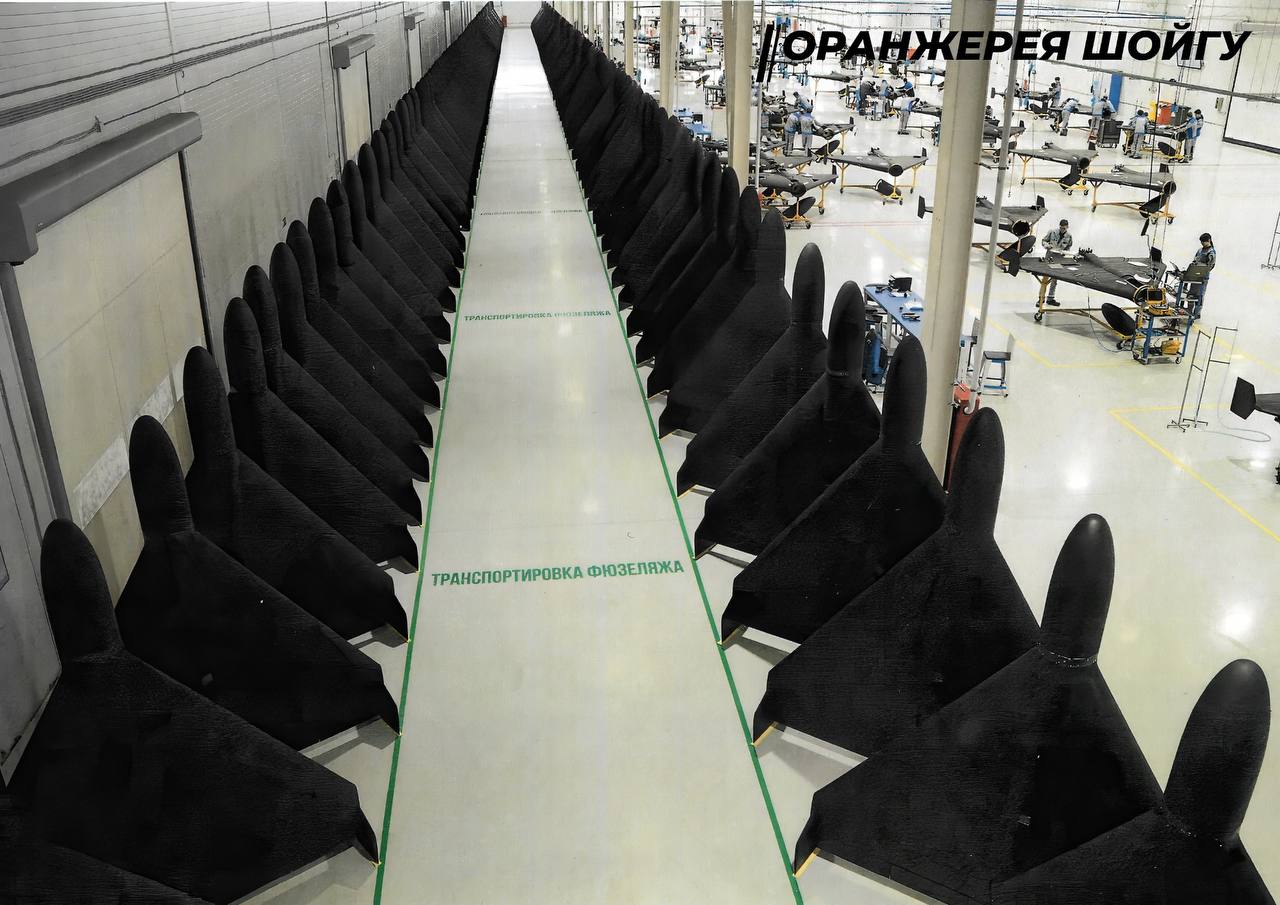
So, despite the Kremlin's efforts to show a menacing scale of production, in reality, the situation is not as impressive but not particularly good either. The Defense Intelligence of Ukraine estimates that russia is currently capable of making 330–350 units of Shahed-136 per month.
The production rate of these loitering munitions relies on the supply of components, both from Iran and China. Among other findings learned in the process of studying the Shaheds, the use of multiple engines, practically the same in their design but from three different companies, has already been recorded.
The russian federation is planning to achieve fully localized production based only on russian-made components no sooner than 2026, even though it is unlikely they will manage to find substitutes for all Western civilian electronics used in Shaheds by that time.
Read more: Jet-Driven Shahed-238 Disassembled: Engine From Czechia, Satellite Navigation Tools From Canada (Photo)






